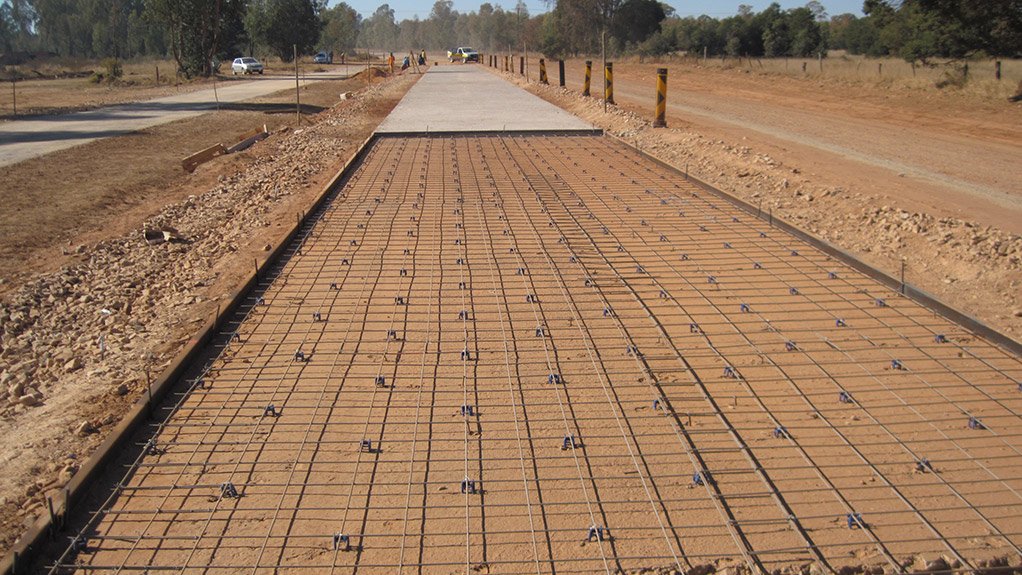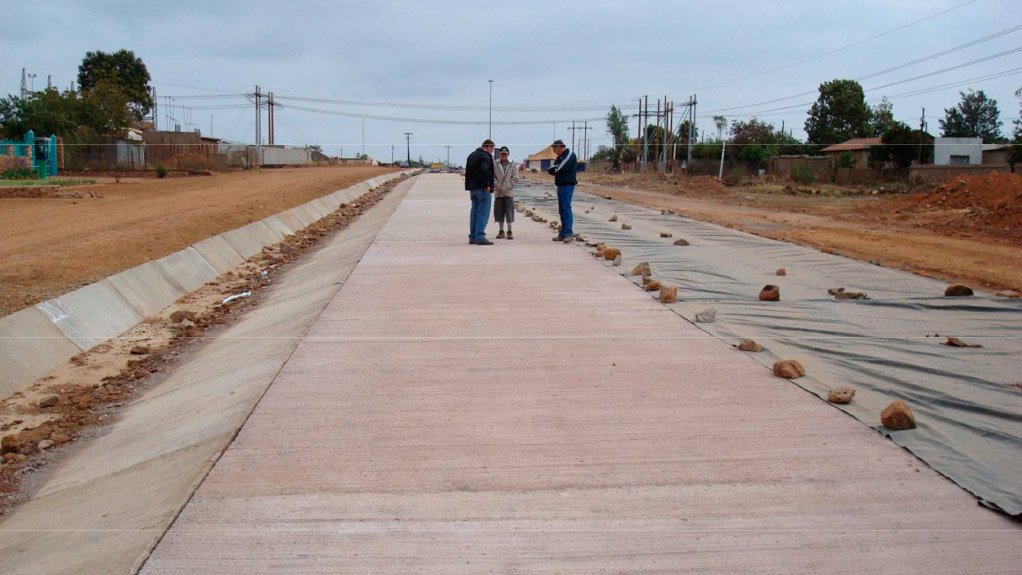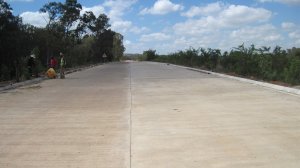The Built Environment unit at the Council for Scientific and Industrial Research (CSIR) has developed a cost-competitive ultrathin concrete pavement surface that, for the upgrading of unpaved roads to paved roads, is more durable than many other pavement alternatives (such as asphalt), as well as more labour-intensive, adhering to government’s call for job creation.
CSIR accelerated pavement testing research group leader Louw du Plessis says the ultrathin layer of reinforced concrete pavement (UTRCP) is suitable for the building of residential and low-volume roads.
It is constructed using a very thin (50 mm to 75 mm) concrete layer, with a minimal amount of steel reinforcement.
Soshanguve, Atteridgeville and Mamelodi in Tshwane, already have a number of UTRCP roads.
Various consultants are using UTRCP roads now in low-cost residential housing developments, says Du Plessis.
“An example of this is in Ga-Rankuwe where 30 000 m2 of roads have already been constructed, proving the technology has gained market acceptance.”
The construction of all modern roads is highly mechanised and limited opportunities exist for the extensive use of hand-labour, he adds.
However, the construction of a UTRCP road can be up to 350% more labour-intensive than conventional surfacing methods such as asphalt.
By comparing UTRCP pavement construction to other surfacing techniques, it was found that it takes 1 124 workdays to complete one kilometre of UTRCP road of standard width. In contrast to this, a Cape Seal road of the same standard requires 375 days, asphalt 84 days and block paving 310 days.
Also, one of the downstream benefits of UTRCP roads is that the skills acquired during construction can be used in other concrete-related building activities. The handling, mixing, placing, compaction and curing of concrete form an integral part of all concrete building projects, explains Du Plessis.
“This benefit leads to sustainable skills development, which should benefit the community long after the construction of the pavement has been completed.”
The technology is also “ideally suited to micro-enterprises and emerging contractors”, since very little capital is required to enter this field. Only basic tools, such as small cement mixers, are required, which are neither expensive to acquire, nor expensive to maintain, says Du Plessis.
Another benefit is that the design philosophy of the UTRCP system requires “very little substructure preparation” before the concrete is placed on top.
If the in-situ material is of sufficient quality and strength, no additional layer works or imported material are required.
“This obviously depends on the level of traffic, the quality and strength of the substructure and the design of the concrete layer itself,” adds Du Plessis.
The UTRCP overlay can be constructed on an existing old road, with limited preparation of the unsurfaced layer.
Also, because no deep excavations are required, the use of UTRCP limits the damage to, and the need for relocation of, existing underground services.
UTRCP roads also require little maintenance, says Du Plessis.
“Although the quantity of performance data to date is very limited, it is clear that zero to very little maintenance will be required over the lifespan of the pavement, if properly constructed.”
Another benefit is less reliance on imported materials, such as bitumen. In addition, fly ash (a waste product from coal-fired power stations) could be used to replace normal aggregates.
Less lighting energy is also required at night, because of the surface’s reflective properties.
“Considering both construction and life-cycle costs, it has been shown that UTRCP is a more economical alternative than other more conventional surfacing techniques, such as 30-mm-thick asphalt surfacing, Cape Seal and block paving, for the upgrading of gravel roads to paved standards,” says Du Plessis.
“It is clear that the use and deployment of UTRCP offers significant benefits. If UTRCP roads are properly designed and constructed, it offers a competitive alternative for the upgrading of unsurfaced roads.”
As with any pavement construction method, however, UTRCP roads also have disadvantages.
The biggest one is that they must be constructed with good quality control and supervision.
“One has to be mindful that the majority of the labour force on these projects consists of unskilled people with no road engineering experience and little understanding of the correct construction procedures,” says Du Plessis.
The placement of the steel inside the thin concrete is one critical component of the construction process, for example. It has to be placed at the correct height to limits crack formation, but can be a major contributor to crack formation if placed too close to the surface.
Whereas small hairline cracks are harmless, large uncontrolled cracks will allow water to penetrate the pavement and deteriorate the substructure with time.
Another disadvantage is that concrete roads are noisier to travel on, and have to be textured to ensure adequate skid resistance, especially during wet weather.
Another negative attribute is that concrete needs time to develop sufficient strength before traffic can be allowed on such roads.
This means that concrete roads have to be closed to traffic between 10 and 14 days, as opposed to asphalt surfacing or bituminous seals, which can be opened within hours, says du Plessis.
In order to strengthen the current UTRCP product, and to expand its use to provincial roads with heavier traffic loads and volumes, Du Plessis and his team, with the financial support from the Gauteng Provincial Department of Roads and Transport, are testing a 75 mm thick UTRCP version, with higher steel reinforcement, placed on stiffer supporting layers.
“Preliminary results look very promising, indicating that this technology can be used with success on higher order roads.”
EMAIL THIS ARTICLE SAVE THIS ARTICLE
To subscribe email subscriptions@creamermedia.co.za or click here
To advertise email advertising@creamermedia.co.za or click here















